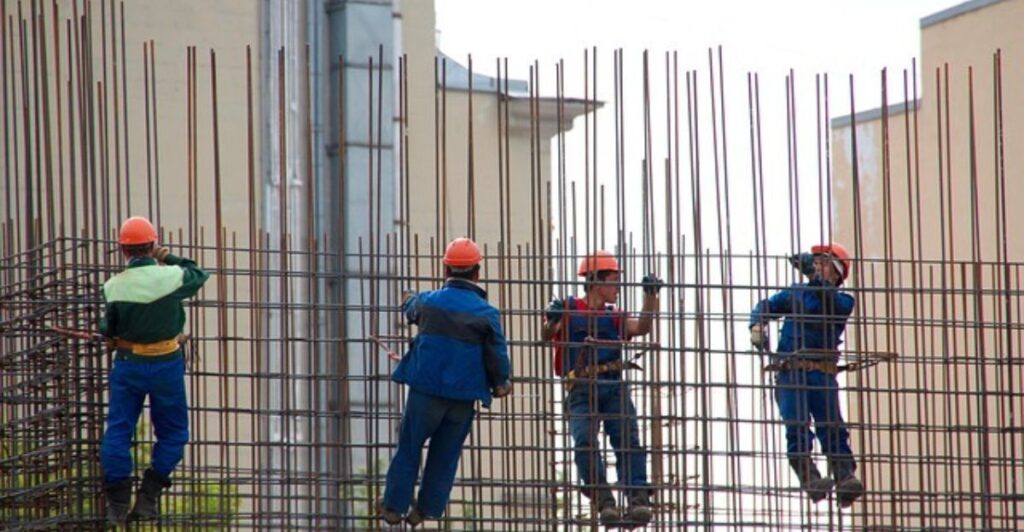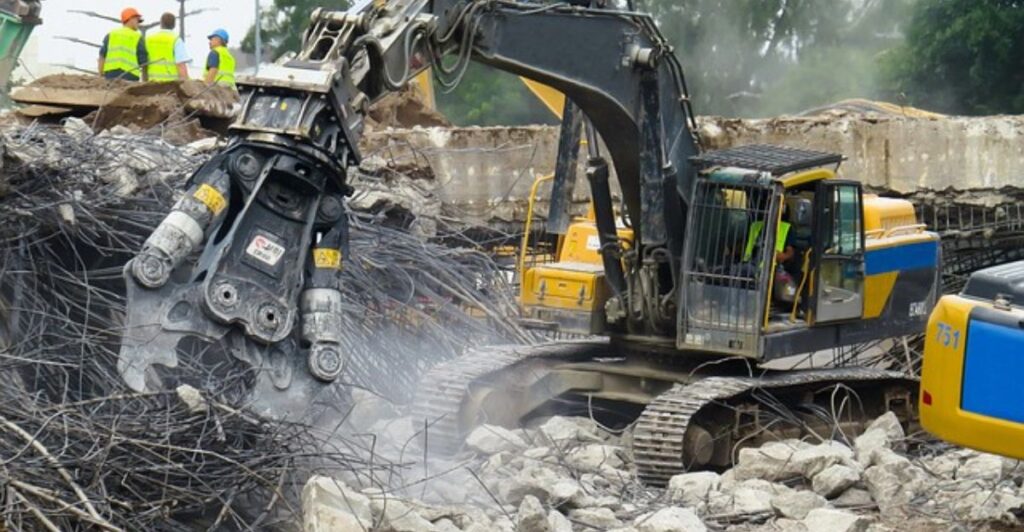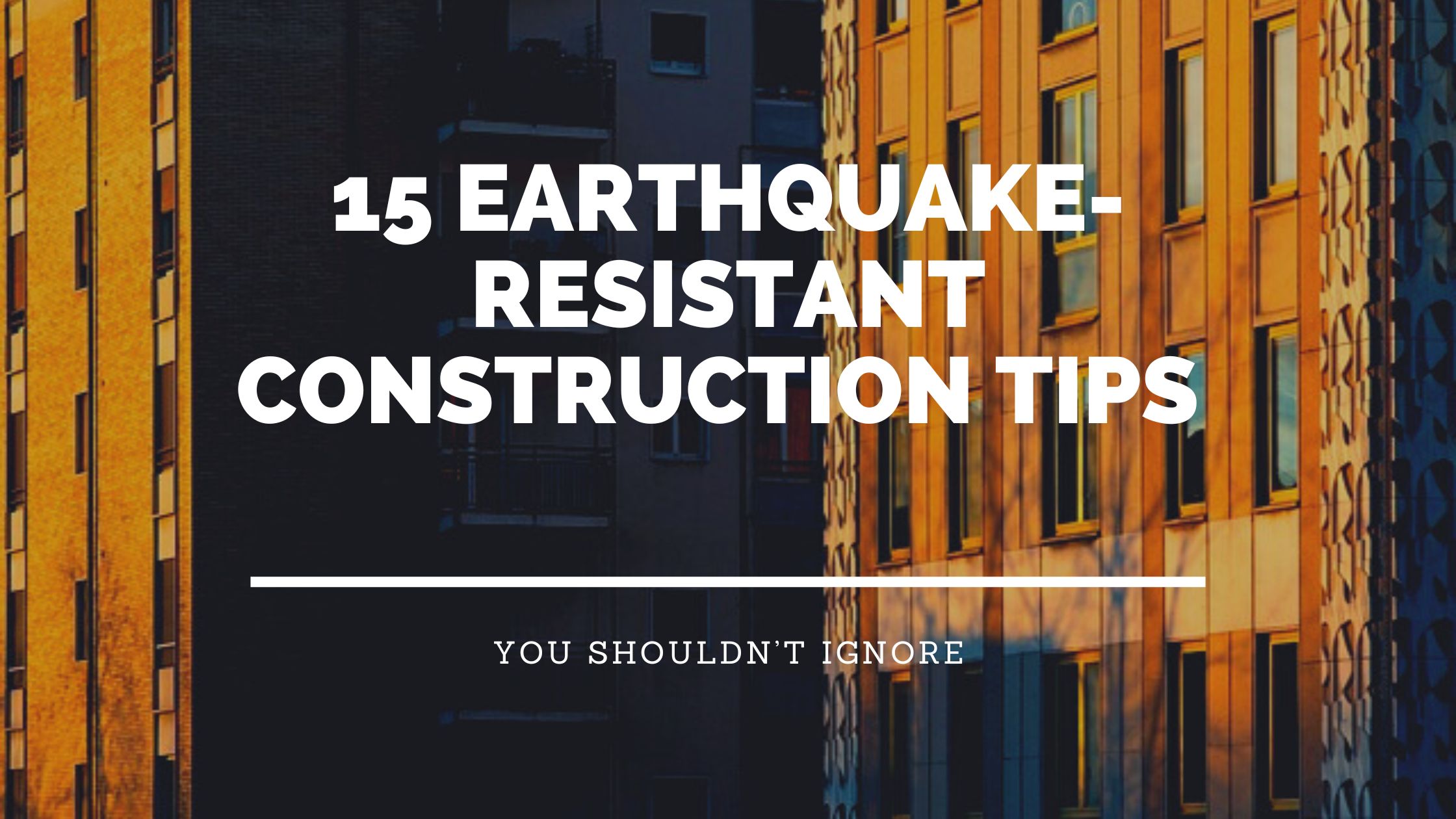Introduction
15 Earthquake-Resistant Construction Tips You Shouldn’t Ignore
Earthquakes strike without warning, but your home doesn’t have to suffer the consequences. Building an earthquake-resistant house is not just a smart choice—it can save lives and minimize costly damage. Whether you’re building from scratch or retrofitting an existing structure, following the right construction strategies is crucial in seismic zones.
In this article, we’ll walk you through 15 must-know tips to make your home stronger, safer, and more resilient against earthquakes..
🛠️ 15 Earthquake-Resistant Construction Tips

1. Choose the Right Location
Avoid building on loose soil, slopes, or filled land. Solid bedrock or compacted earth provides a more stable base that resists shaking.
2. Conduct a Soil Test
Before construction, have a geotechnical expert test the soil to assess load-bearing capacity and earthquake risk.
3. Build a Strong Foundation
Use deep foundations like reinforced concrete footings, pile foundations, or raft foundations to anchor the structure securely.
4. Opt for Lightweight Materials
Lighter construction materials reduce the overall load on the building and minimize damage during tremors.
5. Use Reinforced Concrete Frames
Reinforced concrete with steel bars (rebar) is one of the most earthquake-resilient building materials available.
6. Install Shear Walls
These vertical walls add lateral stability and resist horizontal forces that cause buildings to sway or collapse.
7. Add Cross Bracing
Diagonal steel or wood braces form triangles that prevent walls from deforming during a quake.
8. Secure the Roof
Ensure that the roof is securely attached to the walls using hurricane ties or anchor bolts.
9. Anchor the Building to the Foundation
Use anchor bolts and steel plates to connect the building frame firmly to the foundation.
10. Use Flexible Joints
Flexible plumbing, electrical conduits, and gas lines reduce the risk of breakage and fire during shaking.
11. Follow Local Building Codes
Always adhere to the latest earthquake-resilient building codes and standards recommended for your region.
12. Install Base Isolators
These devices decouple the building from ground motion and absorb shocks during seismic events.
13. Ensure Uniformity in Design
Symmetrical designs distribute weight and forces more evenly, reducing stress during earthquakes.
14. Avoid Soft Stories
Avoid open ground floors with weak support, like those used for parking, unless properly reinforced.
15. Retrofit Older Buildings
Strengthen older structures with steel braces, foundation bolting, and shear wall additions.
Here’s an expanded and SEO-friendly version of the 📈 Trends in Earthquake-Resistant Construction (2025) section for your blog:
📈 Trends in Earthquake-Resistant Construction (2025)
As seismic risks increase due to urban expansion and climate-related geological shifts, the construction industry is evolving to meet the demand for safer and smarter buildings. In 2025, the following key trends are shaping earthquake-resistant construction:

1. Smart Seismic Monitoring Systems
Modern buildings are being equipped with real-time seismic sensors and AI-based monitoring systems that track vibrations and structural stress. These systems can alert residents and emergency services instantly when a building is under strain.
2. Base Isolation Technology for Homes
Once reserved for hospitals and skyscrapers, base isolators are becoming more affordable and are now being used in residential construction to absorb ground motion and reduce building movement during quakes.
3. Modular and Prefab Earthquake-Proof Homes
Prefabricated and modular homes are being engineered with flexible joints, reinforced frames, and shock-absorbing materials. These homes are not only faster to build but also better equipped to handle seismic stress.
4. Bamboo and CLT (Cross-Laminated Timber) Usage
Eco-conscious builders are turning to bamboo and cross-laminated timber for their natural flexibility and tensile strength. These materials provide earthquake resilience while supporting sustainable design.
5. 3D-Printed Reinforced Concrete Structures
Advancements in 3D printing now allow for homes to be printed using fiber-reinforced concrete, which offers custom seismic resistance and reduced construction waste.
6. Ductile Design Principles
Engineers are focusing on ductility—the ability of materials and joints to bend without breaking. Structural components are being designed to deform safely, rather than fail abruptly, during an earthquake.
7. Seismic-Ready Urban Planning
City planners are now zoning for seismic activity, encouraging low-rise, reinforced structures in high-risk areas and including earthquake resilience in environmental assessments and building approvals.
8. Retrofit Incentives and Smart Retrofitting
Governments and NGOs are promoting retrofitting programs with incentives. Innovations like external bracing systems, energy-dissipation devices, and FRP wraps are gaining traction in updating older buildings.
9. Earthquake Simulators for Training and Testing
Builders and engineers are using shake table simulators to test models and educate stakeholders. This trend is improving the design process and public awareness.
10. Global Building Code Harmonization
2025 sees increased efforts to standardize earthquake-resistant construction codes across countries, especially in the Asia-Pacific and South America, to ensure better preparedness globally.
Would you like this trends section converted into a carousel, infographic, or social media post for your blog promotion?
💡 Suggestions for Safer Builds
Building a home that can withstand earthquakes requires more than just strong materials—it demands thoughtful planning, skilled execution, and ongoing awareness. Whether you’re constructing a new home or retrofitting an older one, these practical suggestions will help you build smarter and safer:

1. Hire a Qualified Structural Engineer
Always consult with a licensed structural or seismic engineer who understands local soil conditions, seismic zoning, and building codes. Their input can significantly influence the safety and durability of your design.
2. Use Certified Earthquake-Resistant Materials
Not all materials are created equal. Choose products that have been tested and certified for seismic resistance, including steel reinforcement bars, shear wall panels, and flexible piping.
3. Stick to Simple, Symmetrical Designs
Avoid overly complex or irregular building shapes, which can lead to uneven force distribution during an earthquake. Symmetrical structures are more stable and easier to reinforce.
4. Don’t Skip the Soil Test
Before building, conduct a geotechnical investigation to determine the soil’s strength and characteristics. Building on weak or liquefiable soil greatly increases the risk of structural failure.
5. Invest in Quality Over Cost Savings
Cutting corners on construction materials or labor can lead to deadly results. Choose experienced contractors, follow building codes, and invest in high-quality reinforcements.
6. Retrofit if You’re in an Older Home
If your home was built before modern seismic standards were introduced, consider a structural retrofit. Focus on adding shear walls, bolting the foundation, and reinforcing cripple walls and chimneys.
7. Anchor Heavy Fixtures and Equipment
Secure water tanks, cabinets, and HVAC units with seismic straps or braces. This prevents them from toppling and causing injury or additional damage during a quake.
8. Install Flexible Utility Connections
Use flexible hoses and joints for gas and water lines to minimize the risk of leaks, fires, or flooding after a seismic event.
9. Follow Local Seismic Codes Rigorously
Every region has building codes tailored to its earthquake risk. Adhere strictly to your local seismic guidelines, and update your building plan as codes evolve.
10. Perform Routine Inspections and Maintenance
Even the most earthquake-resistant home can develop weaknesses over time. Schedule regular inspections for cracks, corrosion, or water damage that could compromise structural integrity.
✅ Conclusion
Building an earthquake-resistant home isn’t just about checking boxes—it’s about making sure your family and property are safe when nature strikes. By following these 15 construction tips, embracing new trends, and seeking expert advice, you can drastically reduce earthquake-related risks.
Investing in safety today is a decision you’ll never regret.
📚 References
- Federal Emergency Management Agency (FEMA) – www.fema.gov
- National Earthquake Hazards Reduction Program (NEHRP)
- American Society of Civil Engineers (ASCE)
- International Building Code (IBC) Seismic Provisions
❓ Frequently Asked Questions (FAQs)
Q1. What is the most earthquake-resistant building material?
Reinforced concrete and structural steel are among the best materials due to their strength and flexibility.
Q2. Can old homes be made earthquake-resistant?
Yes. Retrofitting with foundation bolting, shear walls, and bracing can significantly increase safety.
Q3. Are wooden houses safer during earthquakes?
Wood-frame homes are generally more flexible and lighter, which can be advantageous in moderate earthquakes.
Q4. How expensive is it to make a house earthquake-resistant?
Costs vary by region, size, and design. New builds with seismic features cost 5–10% more, while retrofits can range from ₹50,000 to ₹5,00,000+.
Q5. Do all regions need earthquake-resistant buildings?
No, but if you live in or near a seismic zone, it’s essential. Always check local hazard maps.

